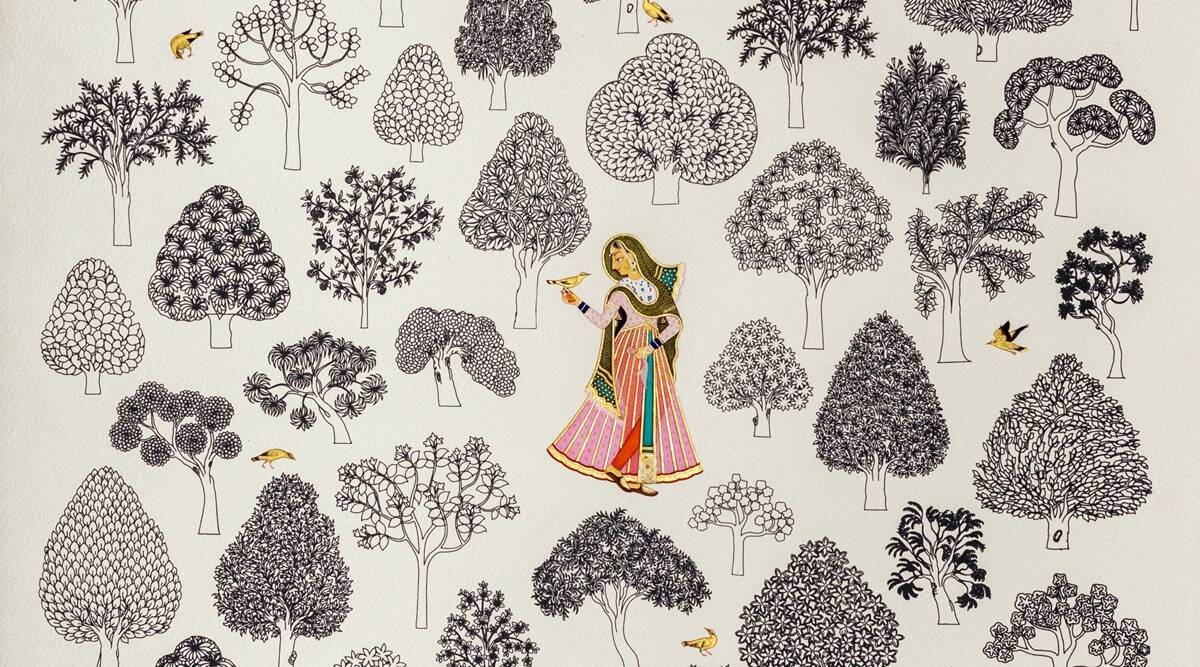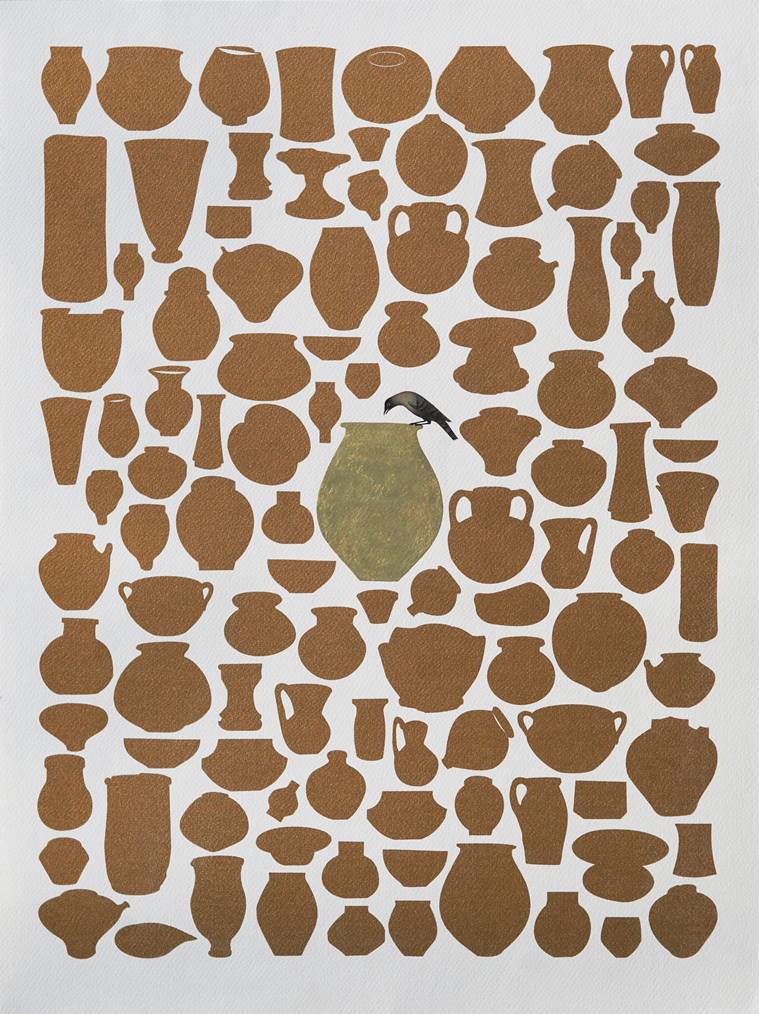“Wandering Connections” – The exhibition romanticises swooning Nayikas, lurking tigers amidst lush grove

Offering an alluring silhouettes of lush vegetation, mango trees, Ashoka, khair, banyan & kadam, shy nayikas, lurking tigers and monsoon clouds, craft revvialist Madan Meena’s exhibition at the India International Centre captures the soul of Rajasthan’s landscape.
Hailing from a village near the Ranthambore Wildlife Sanctuary, the visual artist and researcher has been working with the rural, nomadic and tribal communities of Rajasthan, documenting ballads, craft, folklore, block printing and painting traditions Madan has in the recent past brought exhibitions to the Capital, including the Kalbelia Craft Revival Project.
As Rajasthan had about 200 block printing centres particularly in Barmer and Kota. In this exhibition, he drew inspiration from the Kota Bundi style of miniature painting and collaborated with two very skilled artists, Lukman and Waseem. He created compositions on the computer and left spaces to fuse them with the work of miniature artists so that they can highlight the chief element with their dextrous hands.

In the “Nayika” series, the frame is populated with trees of the land, with a central figure of the nayika, sometimes among peacocks, sometimes fleeing the rain or with her nayak.
Madan lays out his compositions for each artwork with astronomical precision. The measured distances recall his memories of wall paintings, when animals and objects were painted, sometimes in symmetry but never identical. The math and arts graduate takes these equations into his work as well, placing motifs of trees, circles or pots in a rather balanced yet organic fashion.

In the past, Madan has also worked in Kota doria textiles, weaving circles in the abstract. Some of these are exhibited at the show. While it received critical acclaim, he has been deliberate in recent times to localise his motifs. Many of the motifs from wall paintings were carried into printing blocks that would then be stamped on textiles.
Madan’s fascination and revivalist curiosity for the ajrakh technique of printing appear in the “Mapping Memories” series. While in some, the ajrakh print sits alongside an abstracted map of his travels in Barmer, in one he has poetically described the stages of the technique.
From his college days at Rajasthan University, he was inclined to depict textile patterns on the canvas, the Kota map, even the location of his house, as an abstract dot on paper.
